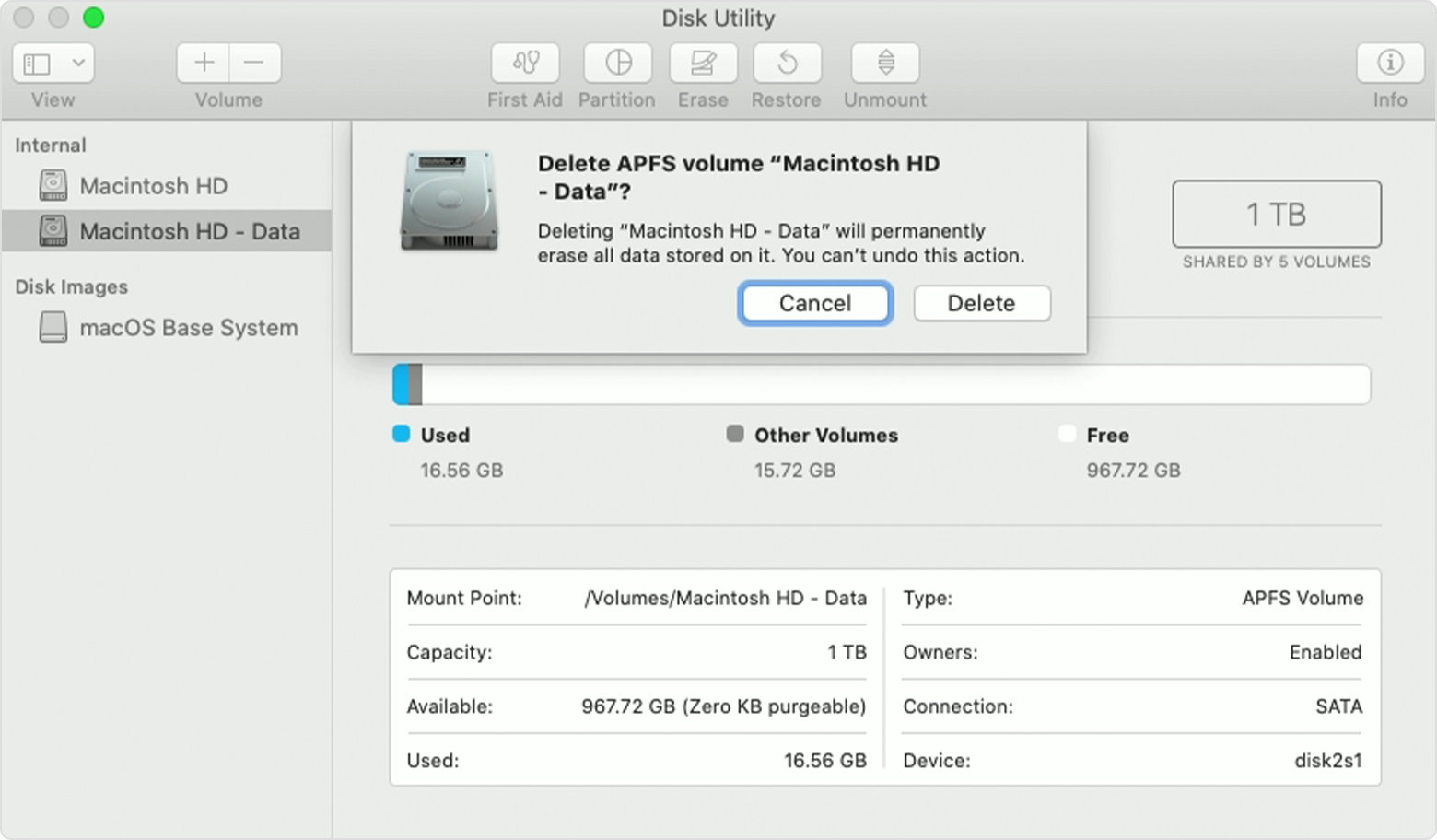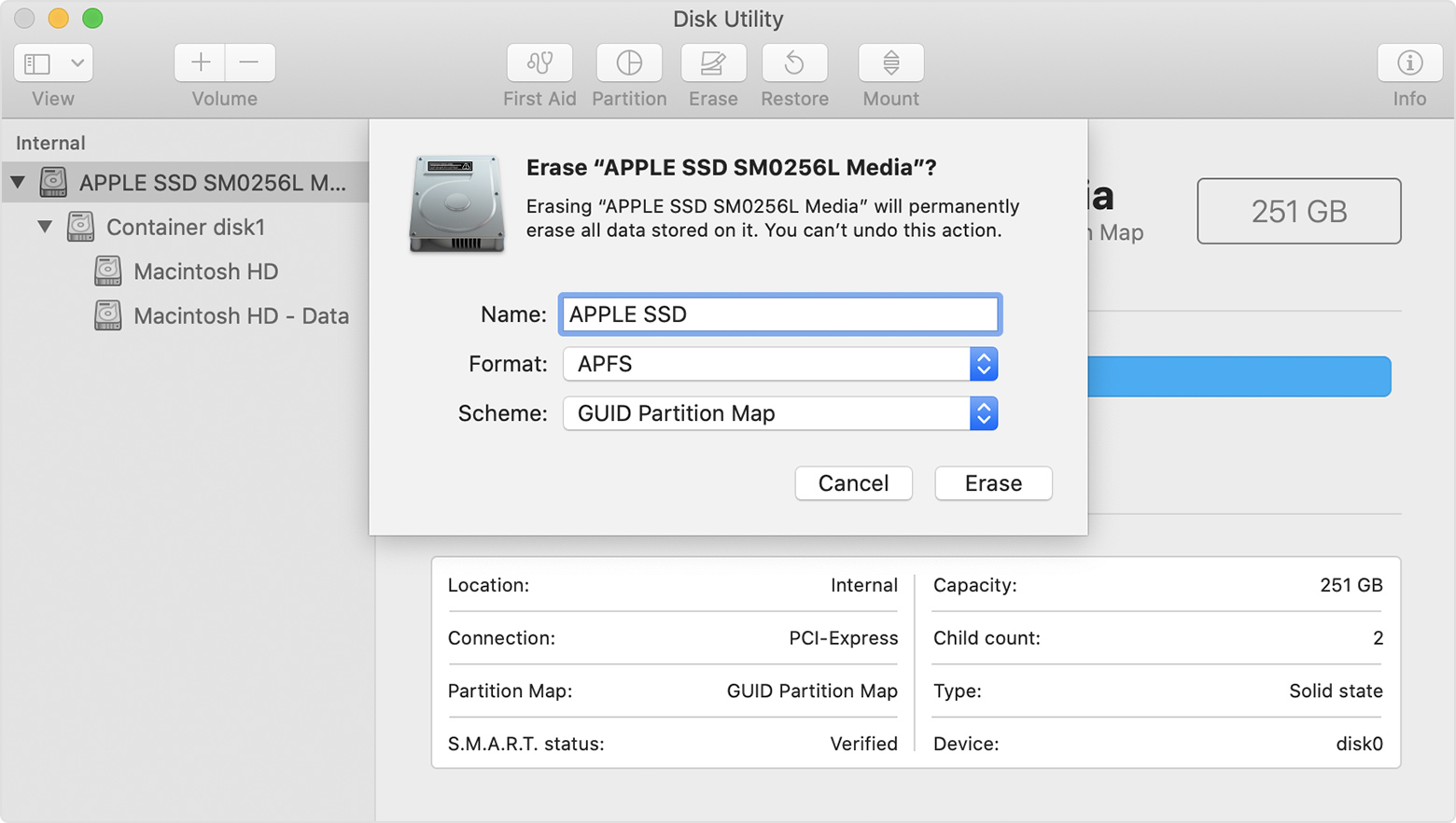Summary : It is advisable to back up all the data on the Macintosh HD before you implement the steps to erase the Big Sur or Catalina SSD volume.
Google chrome for mac pro. FYI, Stellar Data Recovery Professional software helps you recover an accidentally erased Mac hard drive. Do consider this tool if you have erased your drive unknowingly.

Erasing macOS Mojave 10.14 Safely

Erasing macOS Mojave 10.14 Safely
Hope you have backed up the data safely to an external hard drive. Follow the sequences of steps to erase macOS Mojave SSD/HDD:
Once you enter the Disk Utility, you'll have to select the drive you want to erase. In this case, you'll want to choose Macintosh HD to wipe the entire drive. Then, click the Erase button at the bottom of the window. Note: The Erase option will only appear as a clickable button when the computer is booted up using the command + R keys. Active Oldest Votes. Well, your having wiped and reformatted the HD, there IS no bootable volume on that machine, so that HD cannot be selected as a bootable startup disk, as it has NO data on it at all, let alone a full Mac OS with which to boot. Restart a Mac and hold down Command-R after the startup chime sounds, and the computer boots into the recovery mode. Select Disk Utility from the startup menu, and you can erase your startup drive. Method 2: Erase free disk space of Mac startup disk. Erase Free Space mode will help you wipe the free disk space of your hard drive and permanently erase all deleted data on your hard drive without affecting the existing data. Just follow the steps below to erase free disk space of Mac startup disk. Delete the data you want to erase.
To erase the Mac Startup Disk, select ‘Macintosh HD' from the left panel and click on the ‘Erase' button. After you do that the utility will ask you to a name to the drive after formatting it, you can use any name, even the same ‘Macintosh HD' name.
- Restart your macOS Mojave and press-hold Command and R keys simultaneously. Shortly, you will boot into macOS Utilities often known as Recovery Mode.
- You will be greeted with four option under macOS Utilities. Navigate to the Disk Utility out of the four provided options. Disk Utility mentions – 'Repair or Erase a disk using Disk Utility.'
- In the Disk Utility windows, select your APFS Macintosh HD from the left corner and press Erase tab
- Select name and format for your storage drive and press Erase.
Warning Can u get steam on mac. : Erasing a Macintosh HD will remove your data stored on it. Once erased you can't recover data without a data recovery software hence proceed with caution.
This is how you can erase your APFS start-up disk drive on macOS Mojave 10.14.
Also Read, How to Recover Data from macOS Mojave Start-up Disk?
These steps apply only to Mac computers with an Intel processor. The steps to erase a Mac with Apple silicon are different.
Before erasing your Mac
- Make a backup of any files that you want to keep. Erasing your Mac permanently deletes its files.
- If you want to restore your Mac to factory settings, such as to prepare it for a new owner, first learn what to do before you sell, give away, or trade in your Mac. Then erase your Mac as the final step.
Use Disk Utility to erase your Mac
Mac Erase Startup Disk Software
- Start up from macOS Recovery: Turn on your Mac, then immediately press and hold these two keys until you see an Apple logo or other image: Command (⌘) and R.
- If asked, select a user you know the password for, then enter their administrator password.
- From the utilities window, select Disk Utility and click Continue.
- Select Macintosh HD in the sidebar of Disk Utility. Don't see Macintosh HD?
- Click the Erase button in the toolbar, then enter the requested details:
- Name: Macintosh HD
- Format: APFS or Mac OS Extended (Journaled), as recommended by Disk Utility
- Click Erase Volume Group. If you don't see this button, click Erase instead.
- If asked, enter your Apple ID. Forgot your Apple ID?
- After the erase is done, select any other internal volumes in the sidebar, then click the delete volume (–) button in the toolbar to delete that volume.
Disregard any internal volume named Macintosh HD or Macintosh HD - Data, as well as any volumes in the External and Disk Images sections of the sidebar. - Quit Disk Utility to return to the utilities window.
- If you want to start up again from the disk you erased, select Reinstall macOS in the utilities window, then click Continue and follow the onscreen instructions to reinstall macOS.
If you don't see Macintosh HD in Disk Utility
Your built-in startup disk should be the first item listed in the Disk Utility sidebar. Best mac mini for logic pro x. It's named Macintosh HD, unless you changed its name. If you don't see it there, choose Apple menu > Shut Down, then unplug all nonessential devices from your Mac and try again.
If your disk still doesn't appear in Disk Utility, or Disk Utility reports that the erase process failed, your Mac might need service. If you need help, please contact Apple Support.
Mac Startup Disk Full
Learn more
For more information about using Disk Utility, see the Disk Utility User Guide.

